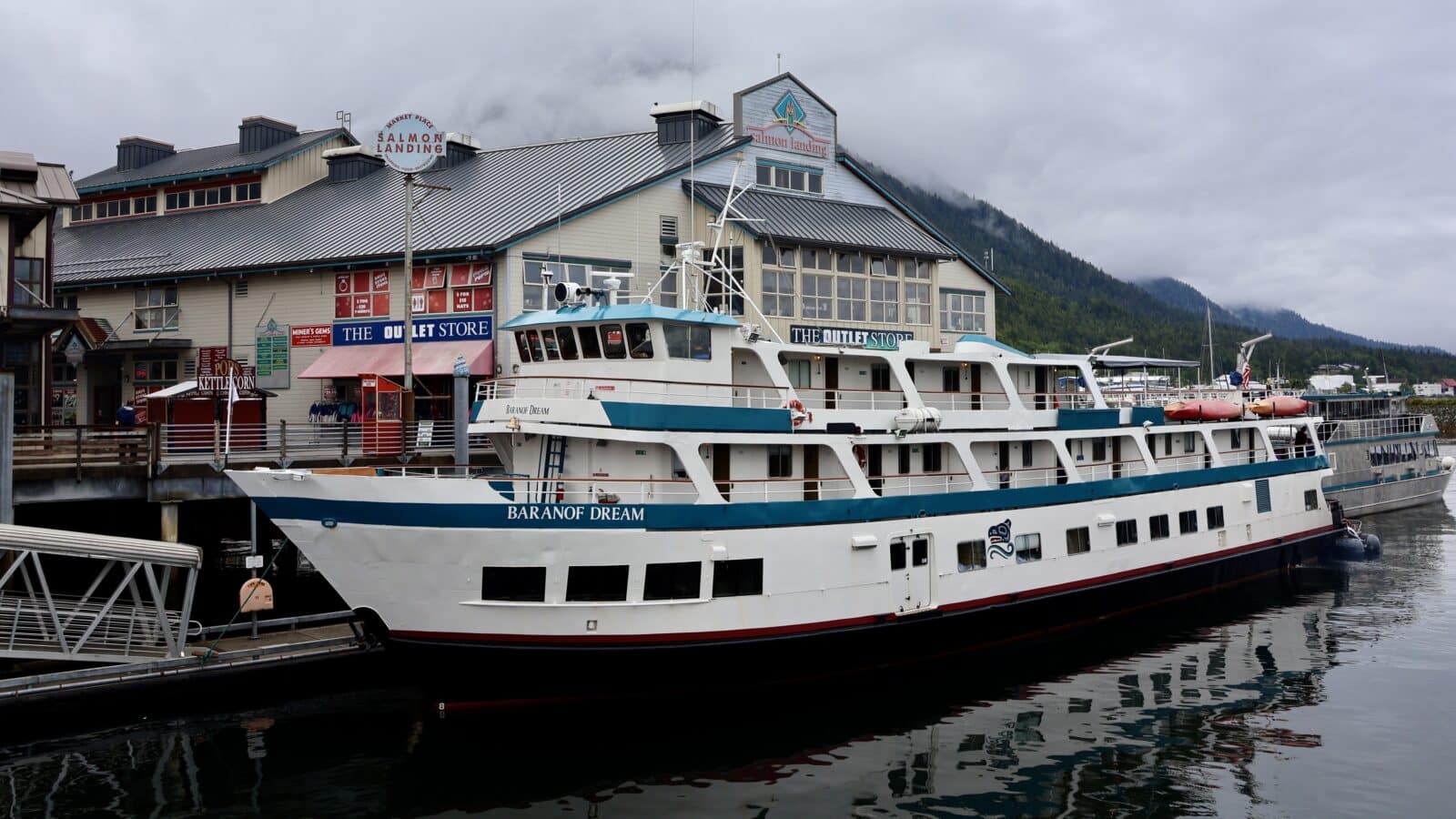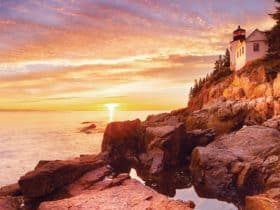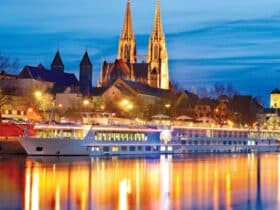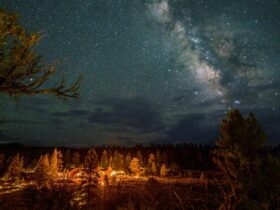When I travel around the United States, I enjoy learning about other Indigenous cultures. As a Native American with tribal roots in the Midwest, I’ve found that, while some of the traditions and history may differ, nearly every tribal nation faces similar issues—loss of traditional language, our true history not accurately shared, and loss of community.
So it was only natural that on the Inside Passage tour from Alaskan Dream Cruises, I found myself entranced with the stories of the Alaska native communities we visited, stories about clans, the efforts to revive and save their languages, and of the history of totems, which play such a major role in the story of southeast Alaska Natives.
Alaska Native stories are a major part of this small-ship cruise tour between Ketchikan and Sitka. Alaskan Dream Cruises is the only Indigenous-owned cruise line in the United States, and guests of Alaskan Dream Cruises’ Inside Passage tour enjoy an up-close look into the history, culture, and traditions of tribes of the region.
The country’s only Indigenous-owned cruise line
Founded in 1970 by Bob and Betty Allen when they renovated an old boat that would be renamed St. Michael after a Russian Orthodox Church saint, Alaskan Dream Cruises has grown to feature four small ships, each which carry between 40 and 80 passengers.
The cruise line take passengers to places the large ships can only dream of visiting. Whether it’s viewing whales up-close or cruising Misty Fjords National Monument, the truly Alaska experience includes docking at the homes of some of the state’s oldest Alaska Native communities.
Each of Alaskan Dream’s ships feature unique art and decor celebrating southeast Alaska Natives, including the Tlingit, Haida (Hi Dah) and Tsimshian (Sim shee in). Tours include discussions about the tribes’ history, culture and traditions.
Native stories on the Inside Passage cruise
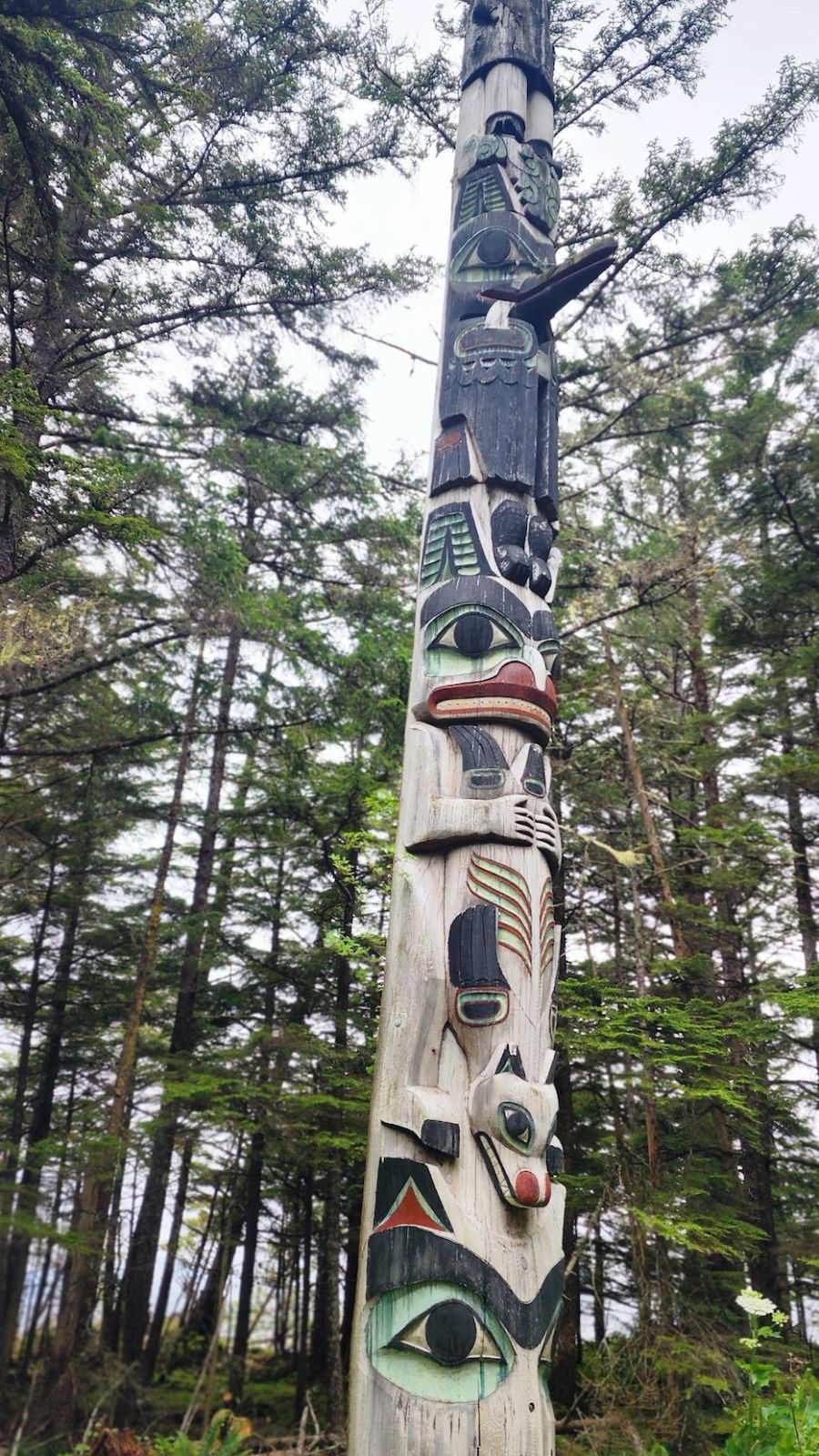

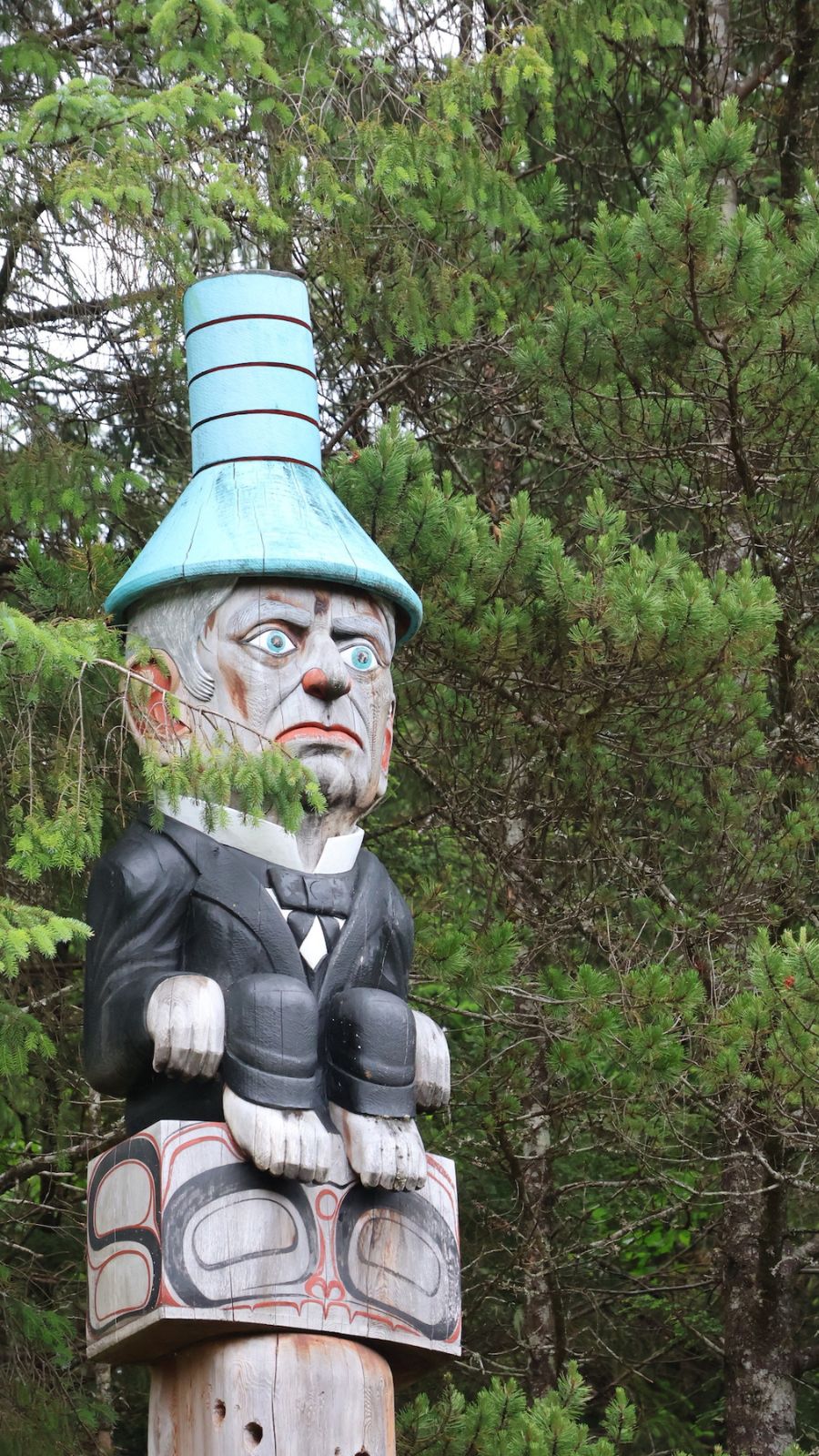
Inside Passage sailings alternate departures between Ketchikan and Sitka. The nine-day, eight-night cruise aboard the 49-passenger Baranof Dream is the longest cruise the company offers.
Ketchikan: Potlach Totem Park and Museum
The cruise line suggests arriving a bit early to check out Ketchikan on your own before the cruise departs. My favorite stop here was Potlach Totem Park and Museum. Learning the history behind totems will change any preconceived ideas you may have about these cultural artifacts.
Totems tell the creator’s story. Only the creator or their family have the honor of sharing the stories. Families can allow others to also tell the stories. Tales are told from bottom to top, meaning “the low man on the totem” is actually the strength of the pole.
Artists use a variety of styles in creating totems, from historical aspects to a little humor. A totem at the park features an effigy of William Seward, the secretary of state who oversaw the transfer of Alaska from Russia to the United States in the 1860s. The totem – mocking him – has stood for years. Seward’s descendants, who were offended by it, could have purchased it, but passed after being told it would cost a few million dollars. The totem remains part of the park’s collection.
While in Ketchikan, I’d also recommend a visit the Totem Heritage Center, where you can see centuries-old totems from southeast Alaska. They’re maintained in a climate-controlled environment, preventing their decomposition.
Tsimshian culture in Metlakatla
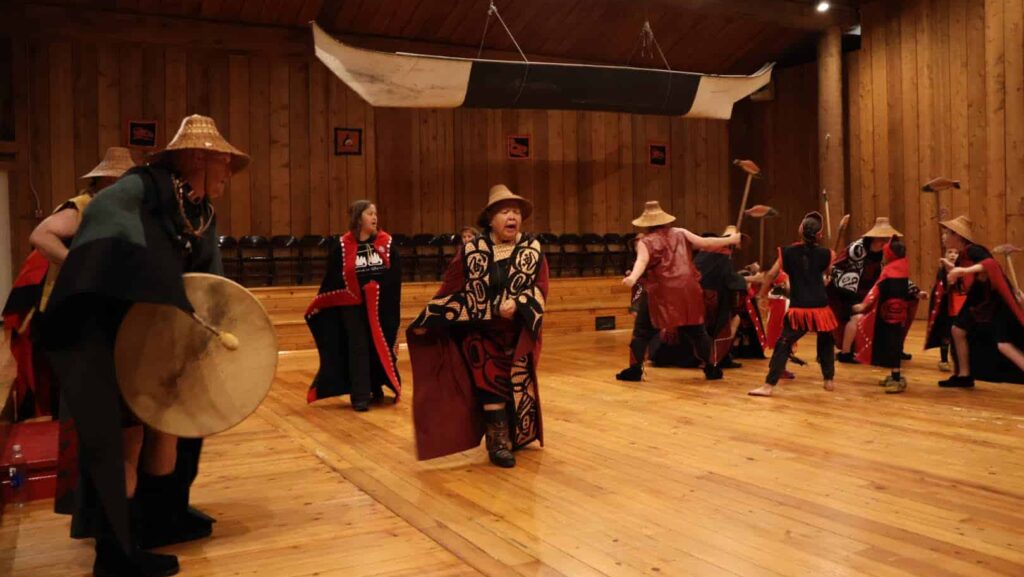
Wolf, Raven, Whale and Eagle (Photo: Tim Trudell)
After leaving Ketchikan, the Baranof’s first docking is at Metlakatla, home to the Tsimshian. Tribal guides escort guests around the small town on Alaska’s only reservation. (Rather than have a set location, other tribes chose to operate as tribal corporations.)
Visitors learn the history of the Tsimshian’ migration from western Canada to Alaska, as well as about efforts to revive the Native language, which, like others around the United States, faces extinction, currently being spoken by a handful of elders.
The Metlakatla excursion includes a visit to a clan house, where elders educate guests about tribal songs and dances. You’ll learn about the four clans—raven, whale, wolf and eagle—and their roles. Each clan brings an individual touch to dances as people move in a circle to the beat of handheld drums. In Native culture, the circle is sacred, bringing balance to life through a person’s mind, body, and spirit.
While at Metlakatla, you also have time to visit a gift shop to browse handmade Alaska Native art, pottery, and clothing.
Haida totems in Kasaan
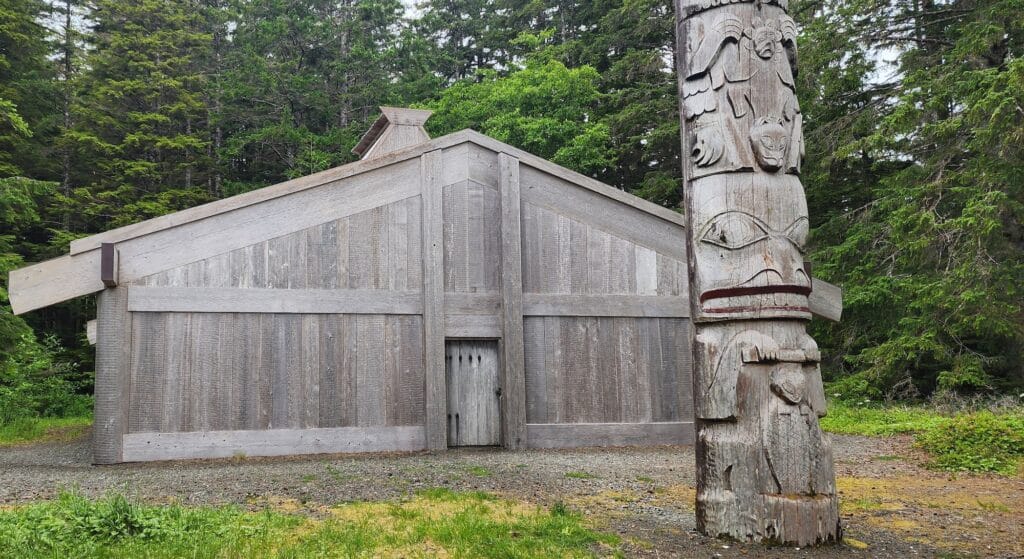
The cruise’s next visit is to Kasaan, home of the Haida tribe. The Haida have been credited with being among the creators of totems. After centuries of constructing totems to tell their stories, Haida ancestors were persuaded by European missionaries to shun their beliefs, destroying totems and other cultural items.
Over the years, Haida leaders have sought to reignite their language, culture and traditions. Among them are art and totem making. A walk through the woods adjacent to a rocky beach brings visitors to a series of totems.
Along the way, visitors view totems laid on the ground. As they age and begin to decay, tribal members honor the totem by helping it return to the soil, to renew it. Once a totem is laid to rest, its story is done being told, unless its creator is still able to design its replacement or the family has authorized new construction. Most of the time, though, the story is done being shared.
History and petroglyphs in Wrangell
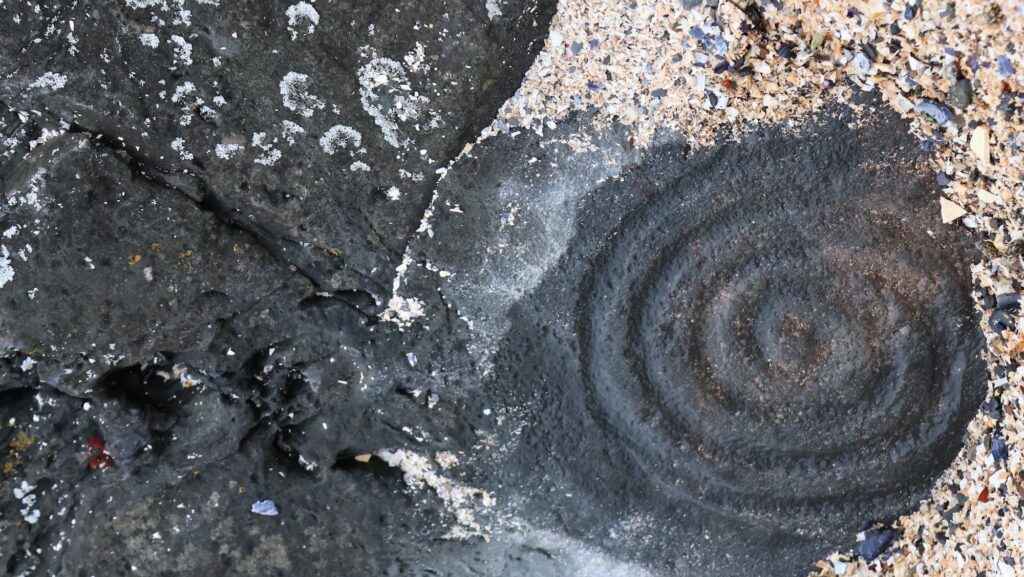
Beach Historic Park in Wrangell (Photo: Tim Trudell)
Traveling north along the Inside Passage, an excursion to the small town of Wrangell introduces visitors to Tlingit territory. The downtown Totem Park celebrates the Tlingit’s history and influence on the area.
The Wrangell Museum examines the area’s past, from the early days of the Tlingit to the arrival of Russians, Europeans and Americans. A look at clothing, transportation, tools and weapons of the Tlingit, along with their culture, highlight a visit to the museum.
Without rationalizing, the museum also explores the consequences of non-Native occupation of the area, such as the ramifications of boarding schools and disease on the Tlingits.
Containing the largest number of petroglyphs in southeast Alaska, Wrangell’s Petroglyph Beach State Historic Park provides a look at ancient Alaska Native art and communication. The rocky beach has dozens of stones with clear pieces of art on natural display, having withstood erosion and centuries of wear.
Regional history in Juneau
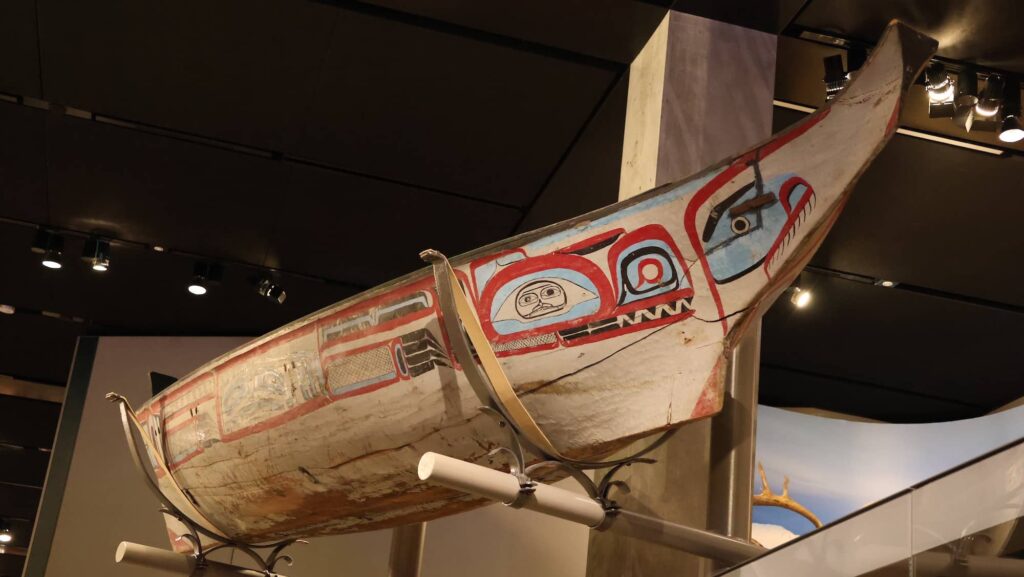
Juneau is home to the Alaska State Museum. Sharing the stories of Alaska’s 200+ tribes is challenging, but offering a look at regional history allows visitors to gain an appreciation. Visitors enter the Alaska Native exhibit through a clan house replica. Complete with artifacts, the exhibit presents an accurate depiction of an historic clan house.
The museum features canoes and kayaks used by coastal tribes, coats and clothing made from animal hides, as well as tools and weapons created from whale and seal bones.
A short walk from the museum, the headquarters of the Southeast Alaska Native Corporation features a series of totems, as well as Native-inspired sculptures.
Along the harbor’s boardwalk, you’ll find a large mural of Elizabeth Peratrovich, who led the fight for civil rights in Alaska during the 1940s, when it was still a territory. Peratrovich’s efforts proved successful as Alaska became the first entity in the United States to pass civil rights legislation, an anti-discrimination law.
Civil rights and totems in Sitka
The final leg of the Alaska Dream Cruises’ Inside Passage Experience docks at Sitka. The town is home to Alaska’s first civil rights organization.
Alaska Native Brotherhood, Sitka Camp No. 1 was the original chapter for the civil rights group. Founded in 1912, the organization grew from protesting discrimination against Alaska Natives in restaurants and movie theaters. It went on to become a leading organization in the civil rights movement.
The Sitka National Historical Park shares the state’s history of totems. From house posts to frontal poles, the totem trail highlights a variety of totems found throughout southeast Alaska.
House posts were carved support poles found in the homes of Tlingit and Haida citizens. Frontal totems are located near a house’s entrance. Detached poles are located throughout a community, signifying a clan’s history and folklore, as well as memorials.
Totem Square is located at a downtown park. A single totem was erected in the middle of the park, which includes a view of the Sitka Sound.
While totems may be the star attraction in Alaska Native villages and communities, they merely begin the conversation of Indigenous culture in the 49th state. The history, culture and traditions are often discussed during tours, as well as through museum exhibits. The Indigenous culture is the driving force of an Alaskan Dreams cruise.



